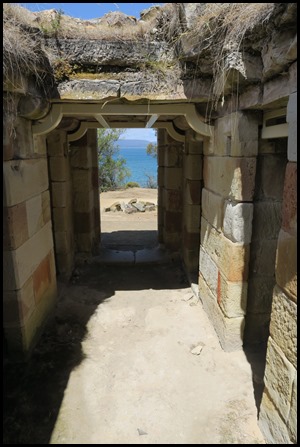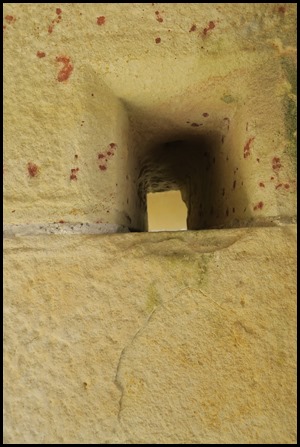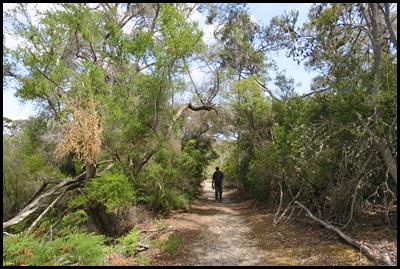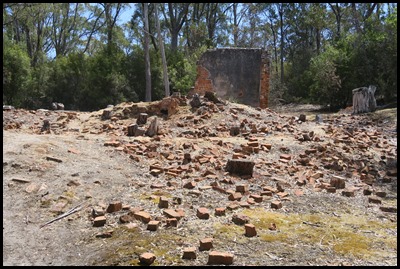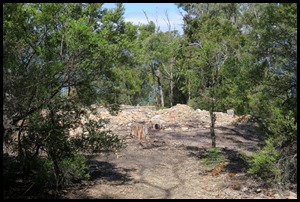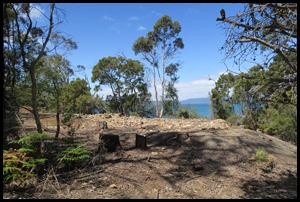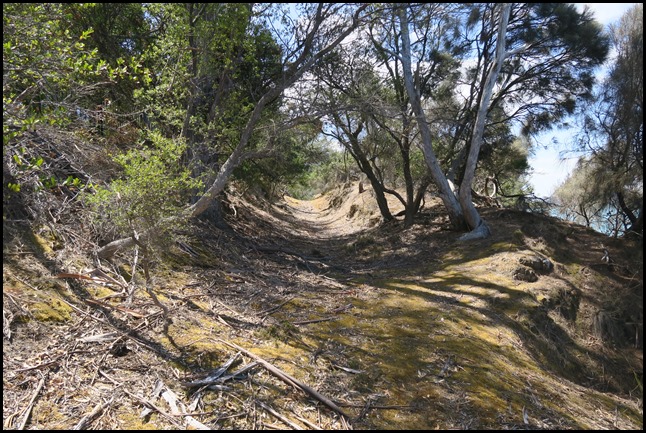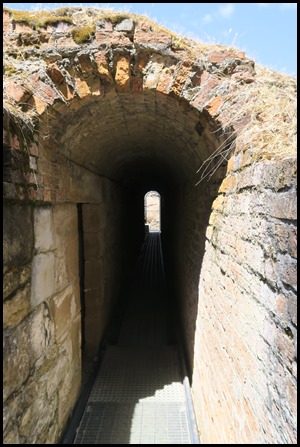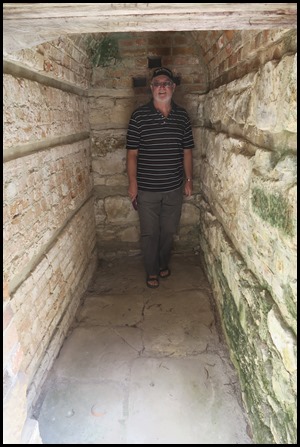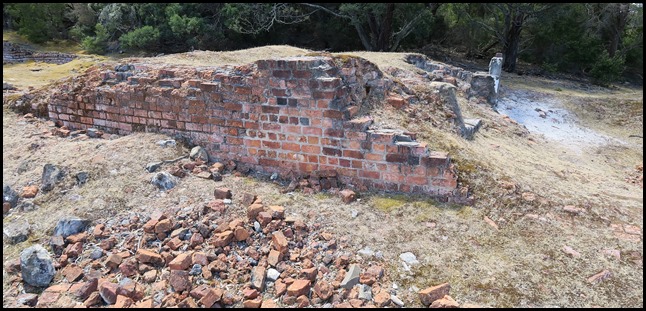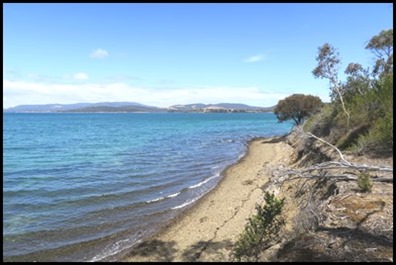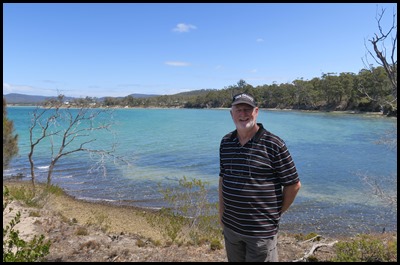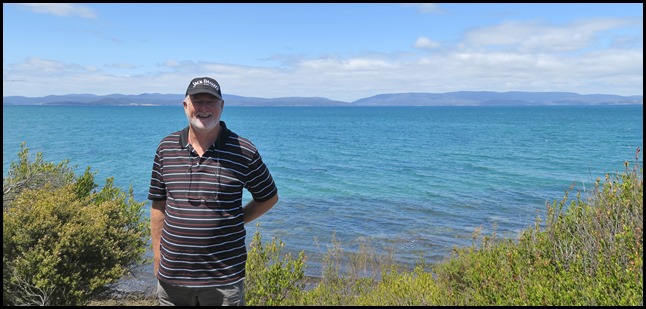Coal Mines

|
The Coal Mines Historic
Site
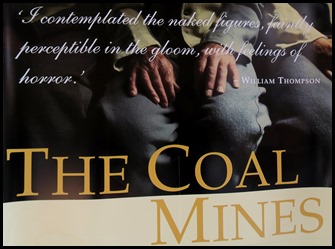 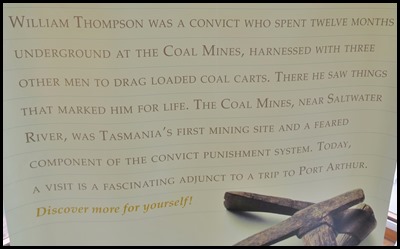 The story
board we saw at Port Arthur intrigued us to want to visit the Coal
Mine.
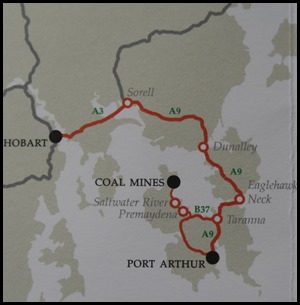 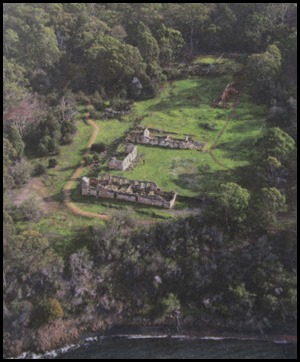 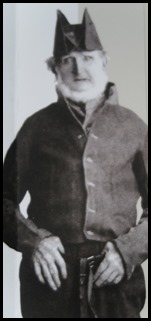 The pamphlet gave us a map of the site, an aerial
view and a picture of the man quoted on the story board, William Thompson.
 William Thompson was a young
shoemaker, transported for life in 1841 for burglary. After his arrival in the
colony young William was sentenced to two years’ hard labour in chains here, for
persistent absconding and theft. He spent twelve months underground at the Coal Mines, harnessed with three other men to drag loaded
coal carts. There he saw things that marked him for life. ‘I contemplated the
naked figures........ as in the first picture.
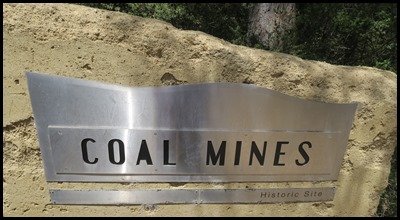 Twenty five minutes in Mabel from
Port Arthur, we arrived at the north-western tip of the Tasman Peninsula to
explore the ruins of The Coal Mines Historic Site, Tasmania’s first operational mine. This site is one
of eleven that together form the Australian Convict Sites World Heritage
properties The Tasmanian sites are Port Arthur, Woolmers Estate and Brickendon
[Longford], Cascades Female Factory [South Hobart], Darlington Probation Station
[Maria Island] and here. The visits gain an
understanding of Tasmania’s role in the Australian convict story.
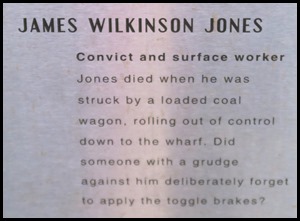 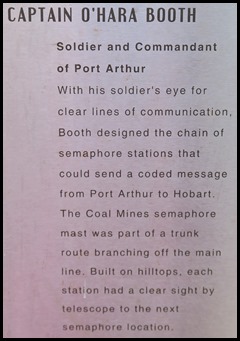  We learned of some
of the characters.
 Thank you to the Department of the Environment for this
very informative piece:- The Coal Mines Historic Site is outstanding for its
insight into Australia's convict history and the use of convicts as a cheap
source of labour for the exploitation of local resources. Today the mine shafts
are evident as circular depressions in the landscape, and eighteen damp dark
alternating solitary cells convey the grim harshness of Australia's convict
history.
The Coal Mines Historic Site was included in the National Heritage List on the 1st of August 2007. Located in bushland on the northern promontory of Tasman Peninsula, beside the tranquil waters of Little Norfolk Bay, the Coal Mines Historic Site contains a collection of ruins and landscape modifications that tell the story of a convict establishment and penal colliery that operated from 1833-48. It is one of several probation stations established on Tasman Peninsula to exploit natural resources and provide for the reform of convicts through hard labour in a secure and isolated landscape. At its peak it held up to 500 convicts as well as officers, guards and their families. Discovering coal - and economic independence.
The main buildings. The bakery, the chapel and the hospital.
Hallway, cell, and inspection vent.
We walked from the main area along a wooded track to the Superintendents Quarters 1843-1846 and then on to....................
.......... the Military Officers Quarters 1837 must have had quite a view in the day.
The Coal Mines Historic Site is an outstanding example of the economic value of convict labour. It played an important role in the early stages of the colony of Van Diemen's Land, which was required to start paying its own way as a means of transition from a penal colony to a free colony. Coal was an essential fuel and an important prerequisite for a functioning economy and since only small quantities were found up to 1833, the discovery and subsequent exploitation of the Coal Mines was of considerable importance. Coal was in high demand as many of the officials administering convicts were entitled to an allowance of coal as part of their conditions of pay. Before the discovery in 1833 of coal at Plunkett Point, the location of the Coal Mines Historic Site, the colony of Van Diemen's Land was required to import coal from NSW. High priority was given to locating deposits. The mines commenced as adits (horizontal tunnels) into a two-metre thick coal seam exposed at the coast. In 1837 Dr John Lohtsky spent 3 months at the mine and charted the mine and coal seams. On his recommendation shafts were sunk and the operation expanded.
Coxswain's launch quarters, the clerk’s quarters and the surgeons quarters 1838.
The tramway from 1834.
Expanding the infrastructure: By 1841 the operation was mechanised with a steam engine to pump water from the mine shafts. Machinery footings and the remains of a large boiler are evident beside the large shaft. The mines were worked by the method of leaving a column of coal to support the roof of the mine, known as the 'pillar and stall' method. Winding wheels brought up baskets of coal that were upturned into carts. A system of inclined tramways utilised the natural hills of the landscape to carry the coal from the shafts to the jetties and to the cargo vessels. Transport to the site was by sea and extensive jetties were constructed to take the coal across the shallow waters of the bay to ships. By 1847 the main shaft was down over 300 feet and there were extensive tunnels and caverns. During its operation the mine produced 60,000 tonnes of coal.
Convict punishment and the probation system: The hard labour for convicts associated with the operation of the coal mine was considered a severe form of punishment. The number of solitary punishment cells, and records of floggings and solitary confinements, indicate a comparatively high record of additional punishment. It was made into a probation station in 1840 when the assignment system was abandoned.
Prisoners barracks bakehouse and barrack 1838.
Hard labour, religious instruction, and education: The probation system of convict management was unique to Van Diemen's Land and was based on the principle that punishment and reform could be achieved by hard labour, religious instruction, and education. It required a strict classification of prisoners, a separate prison for an initial period of confinement and a comprehensive program of religious and moral instruction. It was based on the concept of labour as punishment, but that this labour would be expended on public causes and the furthering of the development of the colony. Prisoners under probation, if they had mining experience, were sent to the mines. While this resulted in an increase in the skilled work force at the Coal Mines Probation Station, coal production did not increase proportionately. Men worked for two eight-hour shifts a day in the low hot damp tunnels of the mines. Other convicts were employed in infrastructure development and the operation of the station. Quarries provided sandstone for buildings, and bricks from local clay were made and fired on site. A lime kiln, which still exists, provided lime for mortar. Shoes were made on site, and pits used for tanning leather are still evident.
Cottages 1850’s to 1870’s
Ruins that reveal the site layout: Today the site is a landscape of ruins that reveal the structure of the probation station with its different forms of prisoner accommodation, including dormitories and separate apartments. Solitary cells were used for punishment. The importance of the church for reform and moral development of convicts is demonstrated in the ruins of the chapel and catechist's (clergyman) house. The layout and location of the prisoner accommodation, the officers' accommodation and the commanding officer's home all convey the hierarchy and operation of the station. Nearby hill locations were used for guard stations and semaphore locations. Messages were transmitted via the semaphores to and from Hobart and Port Arthur. After 1846 when the probation system was considered a failure, Coal Mines again became a secondary punishment station.
Bakehouse and assistant superintendent’s quarters 1848.
Closure and the moral imperative: The Coal Mines is significant because of its important role in the anti-transportation debate. The Probation Station became infamous for its immoral activities. The colonial administration and Tasmanian community considered the place as among the worst penal station for homosexuality. Lieutenant Governor of Van Diemen's Land, Charles La Trobe, visited the Coal Mines in October 1846 and reported that 'unnatural crime had been more that ordinarily prevalent for some time past'. The reputation for homosexuality at the Coal Mines Station was a factor that contributed to the demise of the probation system, and was also used as a means of swaying British public opinion against the further transportation of convicts to Van Diemen's Land. The Coal Mines were officially closed as a probation station in 1848 on 'moral and financial grounds', although the mines continued to be worked privately until 1877.
ALL IN ALL BEAUTIFUL VIEWS, SHAME MANY SUFFERED HERE INTERESTING USE OF CONVICT LABOUR |

